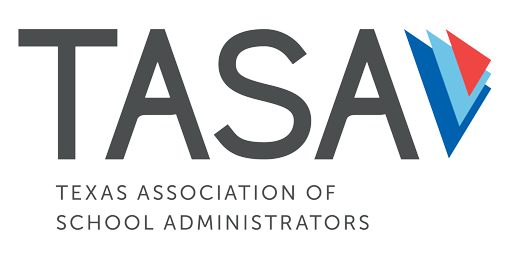by Dr. Quintin Shepherd
 Shepherd is superintendent of Victoria ISD and works as adjunct professor at University of Houston-Victoria. He has served as a superintendent for the past 18 years in three states. This article originally appeared in the fall 2021 issue of TASA’s INSIGHT.
Shepherd is superintendent of Victoria ISD and works as adjunct professor at University of Houston-Victoria. He has served as a superintendent for the past 18 years in three states. This article originally appeared in the fall 2021 issue of TASA’s INSIGHT.
If you happen to be even a novice runner or cyclist, you are aware of the concept of headwinds, tailwinds and crosswinds. I have been a lifelong ultra-endurance athlete, so crosswinds are something I actively plan for and around when it comes to training. This is especially true on the Gulf shores of Texas where weather tends to be highly unpredictable.
Even if you are not an athlete, you likely know headwinds are those winds that are blowing at you in the direction you are moving. If winds are blowing from west to east and you are driving from east to west, this is a headwind. As headwinds get stronger, more energy is required to move forward, resulting in more fuel consumption. Tailwinds are the exact opposite. If winds are blowing from west to east and you are also driving from west to east, you’ve got a tailwind. The wind pushes you along. Crosswinds occur when the winds are blowing west to east and you’re driving north to south. As an athlete I move faster, use less effort, and conserve more energy when I am moving with a tailwind. It’s the opposite when moving into a headwind. Keep this in mind, because it’s going to matter later in this article.
Think back to the 2020-21 school year and consider it as a grueling ultra-marathon for a moment. Much of the year was a series of difficult decisions, difficult conversations, community strife and ongoing confusion. The finish line was so far away, we really didn’t know where it was. Around January, a glimmer of hope came in the form of vaccine development. Around February, the hope was growing stronger as people were starting to get vaccines.
By March and April there was a burgeoning feeling the end of the COVID-19 pandemic was near as vaccines would be widely available for nearly everyone. We could begin to see the finish line. January through April created a tailwind. The tailwind was the hope and promise that masks would be behind us, the pandemic would be behind us, and we could get back to “the new normal,” whatever that was supposed to be. The tailwind started as a light breeze, but by April, it became a gale-force tailwind at our backs. This built public sentiment and pushed us forward. Then a funny thing happened.
Around April and May, we learned many people were not ready to get the vaccine. Summer brought with it the political divide that we have seen through much of the pandemic as vaccines became polarizing. This led to confusion, and the Delta variant began to spread through our communities. As a result, the promise of the pandemic being behind us slowly dissipated. In short, the race was not yet finished.
Through the summer and early fall of 2021, some districts were plagued with the question of should we mask or not? We saw the same thing happen around the country. Back to the running analogy, we were in a predicament. The long race got longer, and there is no clear direction on how we’re even supposed to finish.
Do we just keep running with the tailwind and hope that at some point someone tells us we’ve made it to the end? Do we turn around and backtrack for a bit so we can find a new finish line? There’s no right answer of course, and many are choosing different paths. For those who considered mask mandates, what was a massive tailwind became a massive headwind. For those who didn’t, it was the recognition that this marathon is going to last a lot longer than we had prepared for or anticipated.
As this parable of running fits with the story of COVID-19, experience has taught me this happens regularly as a school district superintendent. Sometimes we cannot control the tailwinds and headwinds, but other times we do inadvertently create tailwinds, which can become headwinds.
There are boundless examples. One that comes to mind, and I am noticing throughout the country, could be ESSER. If stipends, salaries and programs become a tailwind in your community, and without a defined finish line, we can rest assured they will become headwinds if we are not able to sustain those staff or programs when the federal funding runs out. We tend to create our tailwinds by the language we are using around initiatives. Perhaps that’s because we are hesitant to share the bad news (the funding will end) with the good news (there are additional funds to support student learning). Reframing the COVID-19 experience as a headwind/tailwind framework can be a valuable leadership learning tool for district leaders moving forward.
The running story is easy to remember, as most stories are. Stories can also be great teaching tools. Sometimes it’s hard for new leaders to connect theory to practice, so for those versed in change management and leadership theory, you might recognize that systems are designed to get a specific outcome. They are self-reinforcing. As leaders, when we design and deploy self-reinforcing systems, oftentimes we are designing tailwinds. The thoughtful leader anticipates whether those tailwinds might become headwinds in the future. Know your race, know your strategy, and be mindful of the winds out there.
MORE LEADERSHIP PERSPECTIVESWanted: Your Leadership Perspective
If you’re an experienced school leader and TASA member with some leadership perspective to share, email Dacia Rivers with a short description of your proposed article, and we may publish it in a future issue of INSIGHT and/or on the TASA website.


